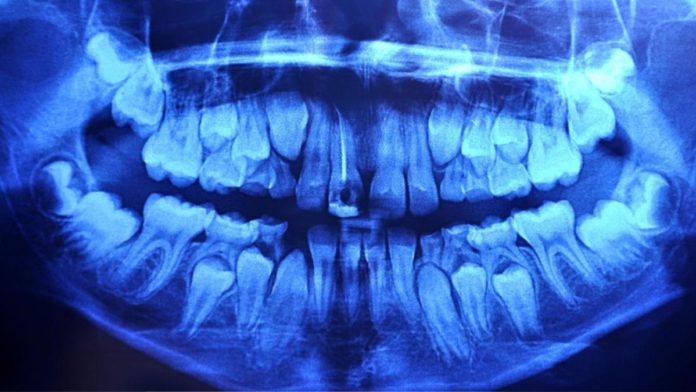A deep learning algorithm, a form of AI, has successfully detected periodontal disease from 2D bitewing radiographs. The finding was reported in research presented at EuroPerio10, a periodontology and implant dentistry congress organized by the European Federation of Periodontology (EFP).
According to Dr. Burak Yavuz of Eskisehir Osmangazi University, Turkey, the study shows the potential of artificial intelligence (AI) to identify periodontal pathologies that might be missed automatically. He added that AI could reduce radiation exposure by avoiding repeat assessments, enabling the earlier treatment, and preventing periodontal disease’s silent progression.
The study utilized 434 bitewing radiographs from patients who had periodontitis. A convolutional neural network, U-net Architecture, used to accurately segment images, was used for image processing.
Read More: Dental care Startup Smiles.ai raises $23 million in Series A Funding Round
Experienced specialist physicians also evaluated the images with the segmentation method. Assessments included:
- Vertical bone loss.
- Horizontal bone loss.
- Total alveolar bone loss about the upper and lower teeth.
- Calculus around maxillary and mandibular teeth.
- Furcation defects.
The neural network identified 2,215 cases of horizontal bone loss, 859 alveolar bone loss, 508 cases of dental calculus, 340 cases of vertical bone loss, and 108 furcation defects.
The algorithm’s success at identifying defects was compared against the physician’s assessment and reported as sensitivity, precision, and F1 score. F1 score is the weighted average of accuracy and sensitivity. For sensitivity, precision, and F1 score, 0 is the worst, and one is the best.
The sensitivity, F1 scores, and precision for gross alveolar bone loss were 1, 0.96, and 0.94, respectively. The corresponding scores for horizontal bone loss were 1, 0.95, and 0.92, respectively. AI could not detect vertical bone loss.
The sensitivity, F1 score, and precision results for dental calculus were 1.0, 0.82, and 0.7, respectively. For furcation defects the values were 0.62, 0.66, and 0.71 respectively.
According to Dr. Yavuz, the study illustrates that artificial intelligence (AI) can pick up many types of defects from 2D images, which can aid in periodontitis diagnosis. More comprehensive studies are required on extensive data to maximize the success of the models and extend their usage to 3D radiographs.


